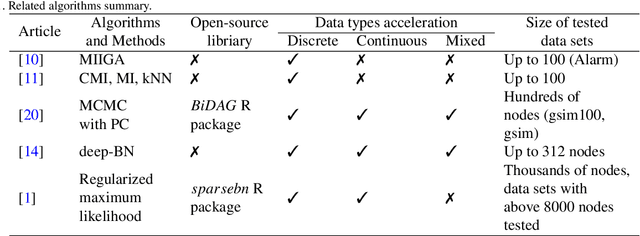BigBraveBN: algorithm of structural learning for bayesian networks with a large number of nodes
Paper and Code
Aug 22, 2022



Learning a Bayesian network is an NP-hard problem and with an increase in the number of nodes, classical algorithms for learning the structure of Bayesian networks become inefficient. In recent years, some methods and algorithms for learning Bayesian networks with a high number of nodes (more than 50) were developed. But these solutions have their disadvantages, for instance, they only operate one type of data (discrete or continuous) or their algorithm has been created to meet a specific nature of data (medical, social, etc.). The article presents a BigBraveBN algorithm for learning large Bayesian Networks with a high number of nodes (over 100). The algorithm utilizes the Brave coefficient that measures the mutual occurrence of instances in several groups. To form these groups, we use the method of nearest neighbours based on the Mutual information (MI) measure. In the experimental part of the article, we compare the performance of BigBraveBN to other existing solutions on multiple data sets both discrete and continuous. The experimental part also represents tests on real data. The aforementioned experimental results demonstrate the efficiency of the BigBraveBN algorithm in structure learning of Bayesian Networks.
 Add to Chrome
Add to Chrome Add to Firefox
Add to Firefox Add to Edge
Add to Edge